|
|
|
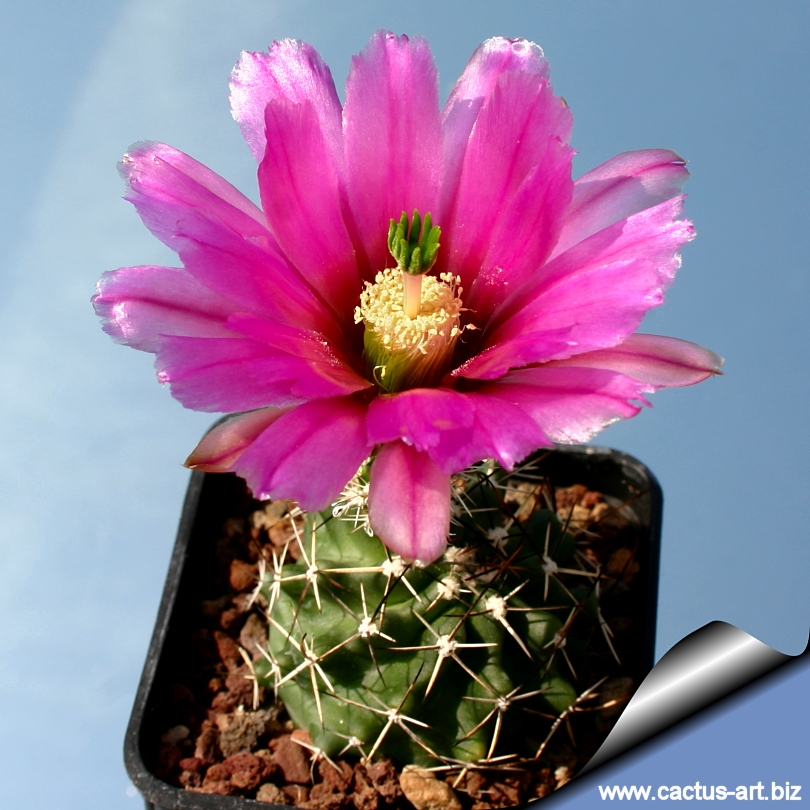
Echinocereus
fendleri SB1958
Coconino Plateau
The flowers are a large brilliant magenta
pink, with darker centers.
|
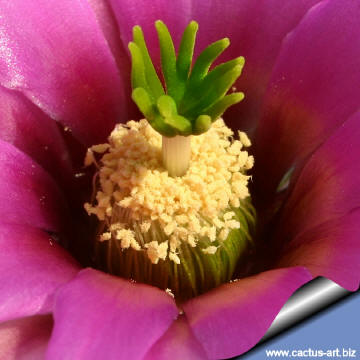 |
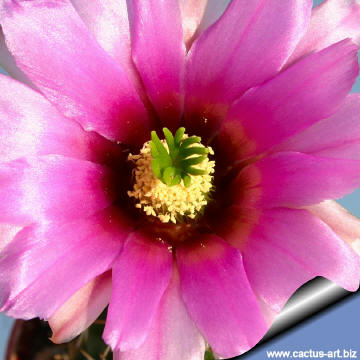 |
|
. |
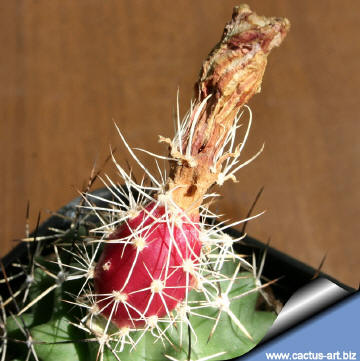 |
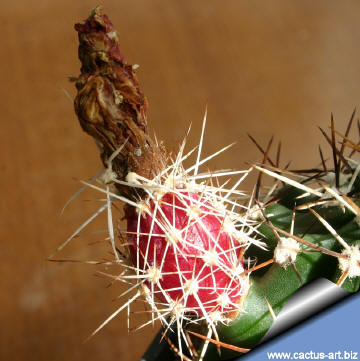 |
|
. |
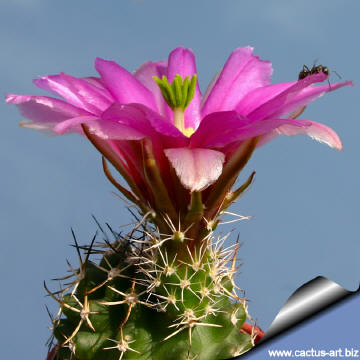 |
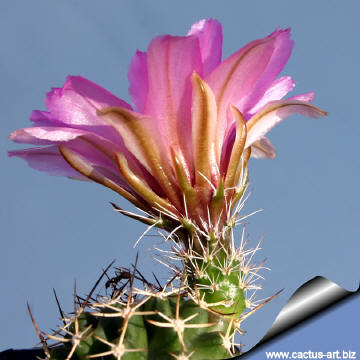 |
|
Advertising
|
|
|
|
|
|
|
Family:
Cactaceae (Cactus
Family)
Scientific name:
Echinocereus
fendleri
(Engelmann) Sencke ex J. N. Haage
In: Preis-Verz. Cact. Succ. 22. 1860.
Origin: USA
(New Mexico, Texas, Colorado, Arizona, Utah) and northern Mexico
(northern Sonora, Chihuahua)
Habitat:
Echinocereus fendleri is found on dry slopes and in rocky areas in
semidesert grasslands, interior chaparral, pinyon-juniper or pine-oak
woodlands, on limestone or igneous substrates, mostly south-facing
hillsides; 900-2400 m;
Common Names include: Pink-flower Hedgehog Cactus,
Fendler’s hedgehog cactus, strawberry cactus,
Short
spined Strawberry hedgehog, Bundle hedgehog.
Conservation status: Listed in
CITES appendix 2.
Synonyms:
- Cereus fendleri Engelmann
(basionym)
in: Mem. Amer. Acad. Arts, n. s.
4: 50. 1849
- Echinocereus fendleri var. kuenzleri
(Castetter, P. Pierce & K. H. Schwerin) L. D. Benson.
- Echinocereus fendleri var. rectispinus
(Peebles) L. D. Benson
- Echinocereus fendleri var. robustus
- Echinocereus pseudohempelii
- Echinocereus kuenzleri
|
|
|
|
Description:
It is a wide ranging and variable species with an indefinite number of
geographic races. It is a low growing , scrubby cactus, that grows
solitary or in small clumps with 5 to 20 stems. The classic fendleri
form has huge violet-purple flowers and attractive white/black spination.
All varieties have large red delicious edible fruits.
Stems: 10 to 30 cm tall, 5 to 7 cm in diameter somewhat flaccid
erect or slightly decumbent, ovoid to cylindric with age.
Ribs: 9 to 13, uninterrupted or sometimes wavy, with sinus
between areoles.
Areoles: Circular areoles 8 to 17 mm apart.
Radial spines: (2 to) 5 to 11 radials, 3 to 20 mm long,
spreading, opaquely white, commonly with dark stripe on underside, often
with contrasting black or brown spines in same areoles (rarely all brown
or all white)
Central spines: 0 to 3 (more often 1) dark, becoming lighter with
age, rigid, straight or curved up to 4 cm long, porrect or ascending, if
curved, then usually directed upward, abaxial central spine like others
in colour or darker, flat to sharply angled. In some areloes accompanied
by short accessory centrals.
Flowers: Close to the stem tips, funnelform, 7 cm in diameter
purple-violet (sometime pink to almost white) throat sometimes darker or
purplish maroon, tips relatively thin and delicate. The stigma is green,
and there is a very large number of stamens.
Blooming season: April to June.
Fruit: 2,5-5 cm long, 12 mm in diameter, edible, bright red, dull
carmine, or purplish maroon, less often orange-tan or purplish orange,
pulp magenta or red.
Echinocereus fendleri var. kuenzleri has short conical stems up
to 15 cm long and 10 cm in diameter, no central spine; 2 to 6
radials about 2.5 cm long and magenta flowers up to 10 cm long.
|
|
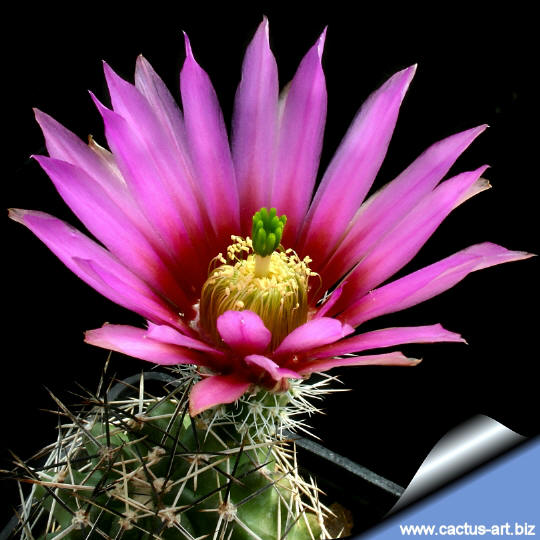
Cultivation:
It grows rather slowly and is sensitive to over-watering (rot prone).
Keep drier and cool in winter. It needs full sun. Very cold resistant,
reportedly to -18°C or less (depending on clones), but needs good
drainage and protection from excessive moisture in winter and well
mulched with gravel chips. It is a fine plant for a rock garden or
container, and contrasts well with agaves, yuccas, and low-growing
flowering plants. It will show its flowers only provided with an
adequate winter rest period.
Propagation: Seeds, can
also be grown from cuttings, as it branches
from the base.

 |
|